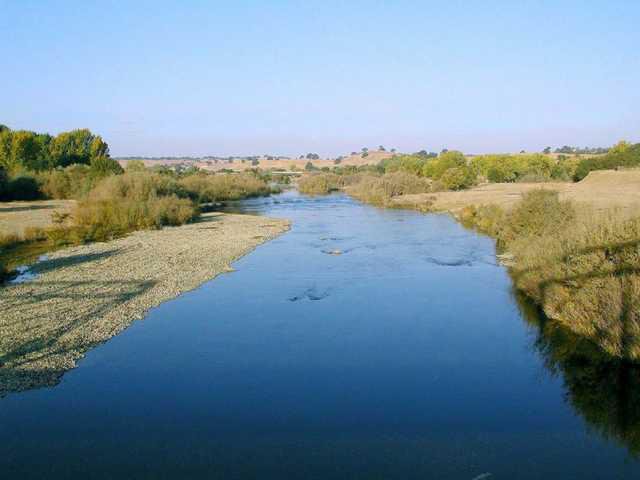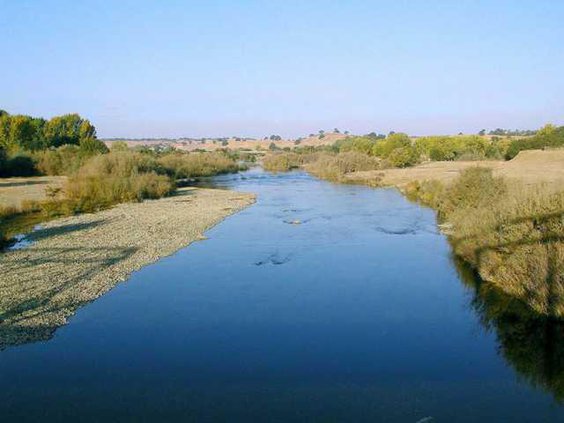A proposal by the State Water Resources Control Board to allocate 40 percent of unimpaired flows along the Tuolumne River for the benefit fish and wildlife was met with adamant disapproval Thursday from a broad coalition of local governments and organizations.
This proposition is part of the State Water Board’s requirement every three years to update the Bay-Delta Plan, which is a state-certified regulatory program used to establish water quality control measures in order to adequately protect beneficial water use in the Bay-Delta Watershed.
While the State Water Board said that state and federal agencies continue to take steps to improve conditions for fish and wildlife, “Californians continue to take more water out of the Delta and its tributaries than the species can withstand.”
As detailed in the draft, the State Water Board proposes increasing flows to provide habitats for fish and wildlife upstream of the Delta from Feb. 1 to June 30 from three tributaries of the lower San Joaquin River and adjusting the salinity requirements to a slightly high level to reflect updated scientific knowledge and protect farming in the Southern Delta.
If these aren’t addressed now, the State Water Board said that could result in “more draconian actions” to establish water quality standards for the Bay-Delta.
In order to demonstrate the implications of the State Water Board’s proposal, Turlock Irrigation District and Modesto Irrigation District looked at data from 2015 to determine that the plan would have led to $1.6 billion in economic output loss, $167 million in farm-gate revenue loss, $330 million in labor income loss and the loss of nearly 7,000 jobs.
“MID and TID continue to be disheartened that the State Water Board is doubling down on this uncompromising, misguided plan that sparked an outcry when the proposal was first released in late 2012,” said TID and MID in a joint statement. “What’s worse is that the State Water Board ignored our community’s recurring pleas to minimize the impacts of its 2012 proposal, and instead increased its desired amount of water to be taken — moving from 35 percent to 40 percent of unimpaired flows.”
To further emphasize their opposition to the State Water Board’s proposal, TID and MID launched “Worth Your Fight,” a website that aims to help their customers and the region understand the implications of the plan and its “attempt to steal their livelihoods.” The website can be found at worthyourfight.org.
“Our community has never faced a threat of this proportion,” said the two agencies in the statement. “MID and TID have continued to fight for the water resource that was entrusted to us 129 years ago. But this isn’t a threat we can confront alone. Everyone — agricultural water, urban water and electric customers — will be affected. This water grab will impact our region’s way of life.”
TID and MID weren’t the only public entities to vocalize their disapproval of the proposal Thursday as California Farm Bureau Federation officials said “water supplies dedicated to fish should be subject to the same efficiency standards as those affecting California farmers and homeowners.”
“For years, regulators have been requiring increasingly more water in the name of environmental protection, but fish populations have continued to decline,” said CFBF President Paul Wenger. “Regulators have no idea how many more fish — if any — would result from dedicating even more water to environmental purposes.
“But we do know one thing: This will hurt people,” continued Wenger.
Wenger described the proposal as untested, unproven and unpromising, saying that it could potentially idle around 240,000 acres of farmland with no guaranteed results. He said the Farm Bureau will urge the State Water Board to revise the proposal in order to create “a balanced plan to help the environment without causing needless suffering.”
Assemblymember Adam Gray (D-Merced) also spoke out against the proposal Thursday, likening it to an “economic death sentence.” He added that it was the State Water Board’s way of declaring a water war on Stanislaus and Merced counties.
“Since the update to the Bay-Delta Plan began, the State Water Board has spent millions of dollars on consultants rewriting the report,” said Gray. “After all this time and expense, and during one of the worst droughts in California’s history, it appears that the Water Board’s only significant change was to demand even more water.”
The State Water Board will hold public hearings on the proposal on Nov. 2 and Nov. 10 in the Byron Sher Auditorium of the Joe Serna Jr. — CalEPA Headquarters Building, 1001 I Street in Sacramento, and on Nov. 4 in the Tuolumne River Room of Modesto Centre Plaza, 1000 L. Street.
The Board will consider approving the proposed Bay-Delta Plan amendments at a public meeting that will be held in early 2017.





